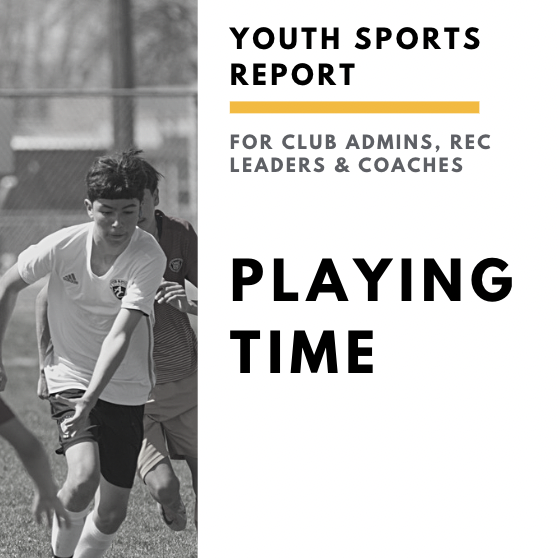Get our exclusive report. Download the iSport360 Club Switching Report Here – For Club Admins, Rec Leaders and Coaches.
Guide to Pre-Workout and Post-Workout Nutrition
Proper nutrition timing can be the difference between hitting a personal record and hitting a wall during training. Understanding when and what to eat around your workouts isn’t just about performance—it’s about maximizing recovery, preventing injury, and achieving your athletic goals faster.
The Science Behind Nutrient Timing
Your body’s nutritional needs change dramatically before, during, and after exercise. Pre-workout nutrition focuses on providing readily available energy while avoiding digestive distress. Post-workout nutrition targets the critical recovery window when your muscles are primed to absorb nutrients for repair and growth.
Research shows that strategic nutrient timing can improve performance by up to 15% and significantly reduce recovery time between training sessions. This advantage becomes even more pronounced for athletes training multiple times per day or competing in tournaments with back-to-back events.
Pre-Workout Nutrition: The 1-3 Hour Window
What to Eat and When
The golden rule for pre-workout nutrition is timing your intake 1-3 hours before exercise, depending on meal size and your individual digestive system.
3 Hours Before: This is your window for a complete meal containing carbohydrates, moderate protein, and minimal fat. Think grilled chicken with rice and steamed vegetables, or oatmeal with banana and Greek yogurt.
1-2 Hours Before: Focus on easily digestible carbohydrates with some protein. A banana with almond butter, whole grain toast with honey, or a smoothie with fruit and protein powder work well.
30-60 Minutes Before: Keep it simple with quick-digesting carbs. A piece of fruit, energy bar, or sports drink can provide that final energy boost without causing stomach upset.
Pre-Workout Meal Ideas by Sport Type
Endurance Sports (Running, Cycling, Swimming):
- Prioritize carbohydrates for sustained energy
- Examples: Oatmeal with berries, banana with dates, or energy balls made with oats and honey
Strength Training:
- Balance carbs and protein for energy and muscle support
- Examples: Greek yogurt with granola, turkey and avocado wrap, or protein smoothie with fruit
High-Intensity Sports (HIIT, Sprinting, Team Sports):
- Focus on quick-release carbohydrates
- Examples: Sports drink, banana, or energy gel
Post-Workout Nutrition: The Critical Recovery Window
The 30-60 Minute Golden Hour
Post-workout nutrition is all about recovery, and timing is crucial. The 30-60 minute window after exercise is when your muscles are most receptive to nutrients, particularly carbohydrates and protein.
During this period, your body needs:
- Carbohydrates to replenish glycogen stores
- Protein to repair and build muscle tissue
- Fluids and electrolytes to restore hydration balance
The Ideal Post-Workout Ratio
Aim for a 3:1 or 4:1 ratio of carbohydrates to protein for optimal recovery. This translates to about 0.5-1.2 grams of carbs per kilogram of body weight and 0.25-0.3 grams of protein per kilogram of body weight.
Post-Workout Recovery Foods
Quick Options (Within 30 Minutes):
- Chocolate milk (naturally provides the ideal carb-to-protein ratio)
- Protein shake with banana
- Greek yogurt with honey and berries
- Recovery sports drink
Complete Meals (Within 2 Hours):
- Grilled salmon with sweet potato and vegetables
- Quinoa bowl with black beans and avocado
- Turkey and hummus wrap with fruit
- Eggs with whole grain toast and spinach
Tailoring Nutrition to Training Intensity
Light Training Sessions (60 minutes or less)
Pre-workout: Small snack 30-60 minutes before Post-workout: Regular meal within 2 hours is sufficient
Moderate Training Sessions (60-90 minutes)
Pre-workout: Balanced meal 2-3 hours before, small snack 30-60 minutes before Post-workout: Recovery snack within 30 minutes, complete meal within 2 hours
Intense or Long Training Sessions (90+ minutes)
Pre-workout: Full meal 3 hours before, additional fuel as needed Post-workout: Immediate recovery nutrition within 30 minutes, followed by a substantial meal
Hydration: The Often Overlooked Component
Don’t forget that proper hydration is part of effective nutrient timing. Begin hydrating 2-3 hours before exercise, continue during training as needed, and prioritize fluid replacement post-workout. For every pound lost during exercise, drink 16-24 ounces of fluid.
Common Timing Mistakes to Avoid
- Eating too close to workout time, causing digestive issues
- Skipping post-workout nutrition and missing the recovery window
- Choosing high-fat or high-fiber foods too close to exercise
- Not adjusting timing based on individual tolerance and sport demands
Making Nutrition Timing Work for You
Every athlete is different, and what works for your training partner might not work for you. Start with these guidelines, then experiment to find your optimal timing and food choices. Keep a nutrition log to track how different timing strategies affect your performance and recovery.
Remember, consistency is key. The athletes who see the greatest benefits from nutrient timing are those who make it a regular part of their training routine, not just something they do before big competitions.
Mastering pre-workout and post-workout nutrition timing is an investment in your athletic performance that pays dividends in improved energy, faster recovery, and better results. Start implementing these strategies today, and watch your training reach new levels.
iSport360 is the only app that does it all for youth sports. For more information on what we do, click here.
About the author:
Amy Masters is a sports mom, coach, and club administrator. She has been coaching youth sports for more than 10 years. She started Jr Lions Field Hockey, the youth recreation program for the Hunterdon County community growing it from 40 players in year 1 to 150 players by year 3. A few years later, she saw the love and competitiveness grow then started Omega Field Hockey Club serving NJ and PA players. Before coaching, she was a collegiate field hockey player for Lock Haven University. In her spare time (lol), she is head of marketing for iSport360 and the co-editor of the Youth Sports Survival Guide. The Youth Sports Survival Guide is the largest youth sports newsletter in the world.
Learn more or request a demo of our youth sports software that is helping teams improve communication, organization and player development.
June 1, 2025





